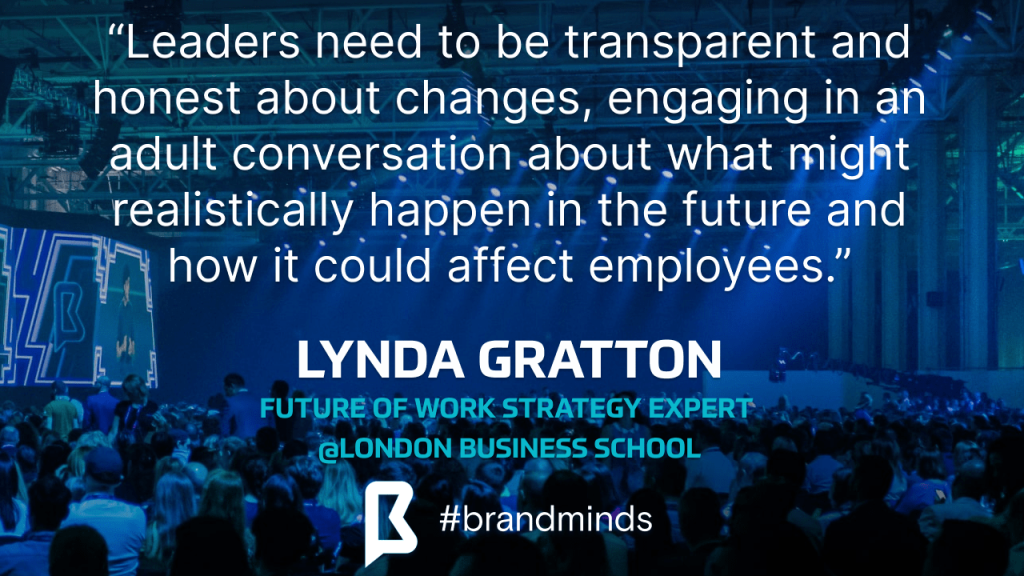Looking to learn successful leadership models to improve your skills and become a better leader for your team?
Get your tickets to the BUSINESS STRATEGY MASTERCLASS today!

Renowned inventor and visionary Buckminster Fuller wrote in his 1982 book ‘Critical Path’ about the pace of growth and how new knowledge, which had doubled every century until 1900, is now estimated to double every 18 months. His theory is called “the knowledge-doubling curve”. Some experts are now saying that global knowledge is doubling every 12 months and reports estimate that medical knowledge is doubling even faster every 73 days.
Not so long ago, leadership meant one man holding all power and knowledge and telling everyone what to do. This authoritarian leadership model where the leader has control over all decisions belongs to a bygone era.
In today’s digital world where knowledge is amplified exponentially and everyone has access to all information, authoritarian leaders are unsuccessful in business. It’s just impossible for one man to keep up with every change disrupting the market or the industry. Leaders need the support of their teams. Businesses, where the individual contribution of every employee is welcomed and nurtured, are successful and prepared to adapt to the future.
The following leadership models are more attuned to the world of today and more successful in the business environment.
Leadership model #1 SERVANT LEADERSHIP
Motto: “My job is to meet your needs”
Leaders practising the servant leadership model believe that successful leadership is when leaders strive to serve employees and help them grow, rather than assume power and take control.
Pros of the Servant Leadership style:
- High employee engagement and motivation;
- The servant-leader puts people first;
- The servant-first leader strives to help people grow and make a lasting positive impact on society;
- The leader has good listening skills and a high level of empathy;
- The servant-leader is emotionally intelligent;
- The team members learn to support each other and develop a serving work culture.
Cons of the Servant Leadership style:
- This style of leadership may focus more on individuals and less on the actual goals of the organization;
- It takes time and it doesn’t work with every organization;
- Not appropriate in situations when making fast decisions is vital.
Leadership model #2 TRANSFORMATIONAL LEADERSHIP
Motto: “Improvement cannot happen without transformation”
Transformational leaders encourage and inspire employees to innovate and develop new ways to grow and improve the path to a company’s future success.
Pros of the Transformational Leadership style:
- Transformational companies stand the test of time because they are constantly embracing change instead of rejecting it.
- It fosters creativity and innovation by producing innovative solutions through collaboration.
- Builds and maintains employee motivation and satisfaction.
- Effective in facilitating organizational change.
Cons of the Transformational Leadership style:
- Doesn’t work with new and chaotic groups or organizations, those that perform mechanized tasks, and in emergencies or situations that require quick decision-making or prompt problem-solving;
- When cultural context exists, it can limit the application and effectiveness of this leadership style;
- Not every employee is willing to take on more responsibility and autonomy over their tasks.

Leadership Model #3 COACHING LEADERSHIP
Motto: “I support your growth”
Coaching leaders take on the role of a coach to their employees investing their time and energy into developing individual team members.
Pros of the Coaching Leadership style:
- The coaching leadership style produces a positive workplace environment;
- Employees know what is expected of them;
- It increases the skill set available to the individual employee;
- The coaching leadership style can create competitive advantages;
- It makes it easier for a company to endure a time of change;
- Coaching leaders turn their employees’ weaknesses into strengths and offer performance feedback that motivates them.
Cons of the Coaching Leadership style:
- In the first stage, the coaching leadership style is time-consuming;
- Doesn’t work if the employees, for whatever reason, are resistant to learning or changing their ways;
- This style doesn’t yield positive results if the leader lacks the expertise to help the employee along.

Leadership model #4 VISIONARY LEADERSHIP
Motto: “Embrace my vision of a better world”
Visionary leaders articulate a vision for the future stating clear goals, outlining a strategic plan for achieving those goals and equipping and empowering each member to take action on the plan at the organizational, team and individual levels.
Pros of the Visionary Leadership style:
- Visionary leaders have the innate ability to inspire and motivate people to pursue a long-term vision.
- The team led by a visionary leader entrusts them with their capabilities and respects their judgment.
- Suitable when the company lacks big-picture thinking and overall vision.
- Team members feel empowered and heard; they have complete autonomy over their tasks.
Cons of the Visionary Leadership style:
- Failure to communicate the vision and get everyone on the same page often results in an organizational breakdown.
- Focussing on the long-term vision may impact the short-term goals and the day-to-day operation of the company.
- Fixation of the leader’s vision could result in other potentially good ideas being tossed aside.
- The visionary leader needs a team who will pull him back down to earth when the vision is not realistic.



















